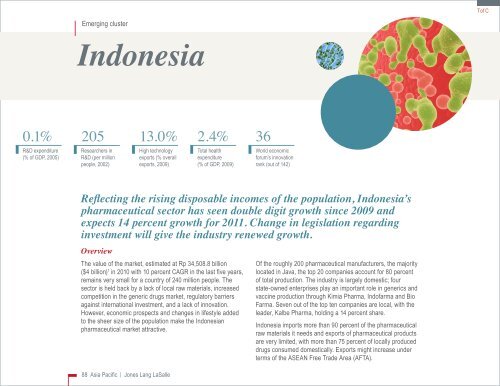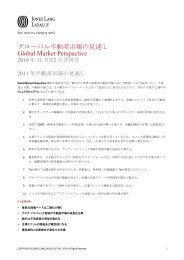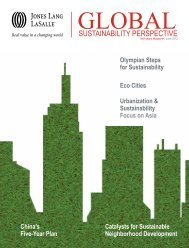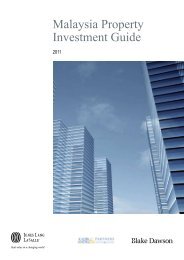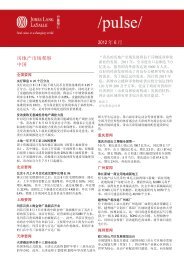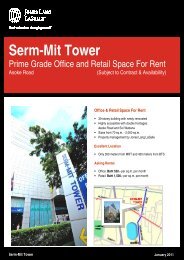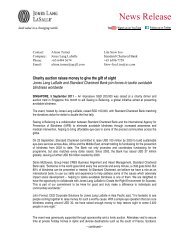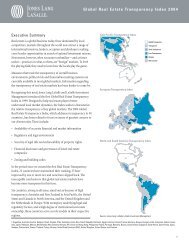Global Life Sciences Cluster Report 2011 - Jones Lang LaSalle
Global Life Sciences Cluster Report 2011 - Jones Lang LaSalle
Global Life Sciences Cluster Report 2011 - Jones Lang LaSalle
Create successful ePaper yourself
Turn your PDF publications into a flip-book with our unique Google optimized e-Paper software.
0.1%<br />
R&D expenditure<br />
(% of GDP, 2005)<br />
Emerging cluster<br />
Indonesia<br />
205<br />
Researchers in<br />
R&D (per million<br />
people, 2002)<br />
Reflecting the rising disposable incomes of the population, Indonesia’s<br />
pharmaceutical sector has seen double digit growth since 2009 and<br />
expects 14 percent growth for <strong>2011</strong>. Change in legislation regarding<br />
investment will give the industry renewed growth.<br />
Overview<br />
13.0%<br />
High technology<br />
exports (% overall<br />
exports, 2009)<br />
88 Asia Pacific | <strong>Jones</strong> <strong>Lang</strong> <strong>LaSalle</strong><br />
2.4%<br />
Total health<br />
expenditure<br />
(% of GDP, 2009)<br />
The value of the market, estimated at Rp 34,508.8 billion<br />
($4 billion) 1 in 2010 with 10 percent CAGR in the last five years,<br />
remains very small for a country of 240 million people. The<br />
sector is held back by a lack of local raw materials, increased<br />
competition in the generic drugs market, regulatory barriers<br />
against international investment, and a lack of innovation.<br />
However, economic prospects and changes in lifestyle added<br />
to the sheer size of the population make the Indonesian<br />
pharmaceutical market attractive.<br />
36<br />
World economic<br />
forum’s innovation<br />
rank (out of 142)<br />
Of the roughly 200 pharmaceutical manufacturers, the majority<br />
located in Java, the top 20 companies account for 80 percent<br />
of total production. The industry is largely domestic; four<br />
state-owned enterprises play an important role in generics and<br />
vaccine production through Kimia Pharma, Indofarma and Bio<br />
Farma. Seven out of the top ten companies are local, with the<br />
leader, Kalbe Pharma, holding a 14 percent share.<br />
Indonesia imports more than 90 percent of the pharmaceutical<br />
raw materials it needs and exports of pharmaceutical products<br />
are very limited, with more than 75 percent of locally produced<br />
drugs consumed domestically. Exports might increase under<br />
terms of the ASEAN Free Trade Area (AFTA).<br />
Tof C


